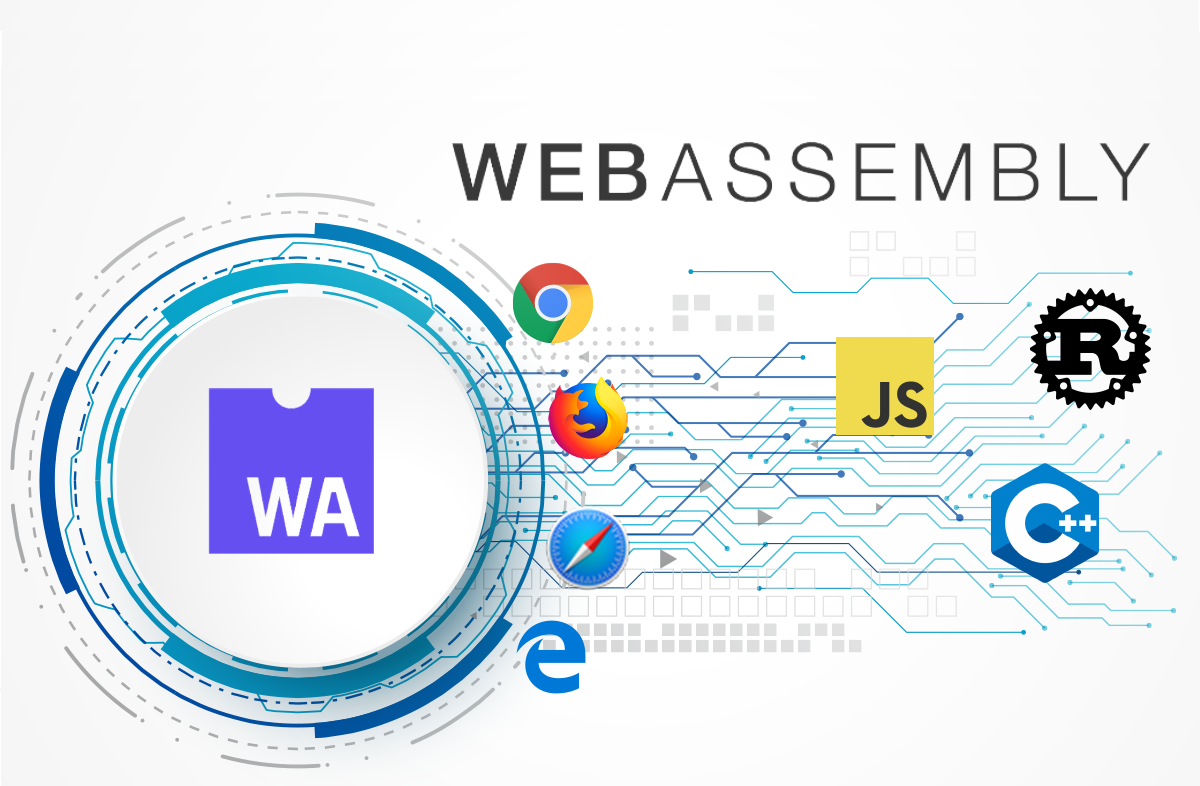WebAssembly (Wasm): Exploring How it Enhances Frontend Performance
 Matthew Oluwabusayo Opoola
Matthew Oluwabusayo Opoola
In the dynamic world of web development, performance is often a crucial factor influencing user experience and overall satisfaction. Traditional web applications primarily rely on JavaScript for client-side scripting, but with the advent of WebAssembly (Wasm), developers now have a powerful alternative to further optimize performance directly within the browser.

What is WebAssembly?
WebAssembly, often abbreviated as Wasm, is a binary instruction format designed to execute at native speed in web browsers. Unlike JavaScript, which is typically interpreted and JIT-compiled, WebAssembly is designed for performance-critical tasks, allowing languages other than JavaScript to be compiled to run on the web platform. This capability opens up new avenues for developers seeking to leverage languages that traditionally compile to native code, such as C, C++, Rust, and even Go, directly in the browser environment.
Enhancing Frontend Performance
1. Near-Native Performance:
One of the primary advantages of WebAssembly is its ability to achieve near-native performance. By compiling code ahead of time (AOT) or just-in-time (JIT) in some cases, WebAssembly bypasses the performance overhead associated with traditional JavaScript interpretation. This capability is particularly beneficial for computationally intensive tasks, such as complex algorithms, simulations, or graphics rendering, where performance gains are significant compared to equivalent JavaScript implementations.
2. Expanded Language Choices:
WebAssembly significantly expands the range of languages that can be used for frontend development. Developers can now choose languages based on factors like performance, familiarity, or existing codebases without being limited to JavaScript. For instance, developers accustomed to languages like Rust, known for its memory safety and performance, can now apply these benefits directly to frontend applications.
3. Interoperability with JavaScript:
WebAssembly seamlessly integrates with existing JavaScript codebases, allowing developers to utilize WebAssembly modules alongside JavaScript modules within the same application. This interoperability ensures that developers can leverage the strengths of both languages within a single frontend application, optimizing performance-critical sections while maintaining the flexibility and productivity of JavaScript for other parts of the application.
4. Broader Application Scope:
The performance enhancements offered by WebAssembly extend beyond traditional web applications. With advancements in tooling and browser support, WebAssembly is increasingly being adopted for complex applications such as games, video editing software, CAD tools, and more. These applications can now run efficiently in the browser without sacrificing performance or user experience.
Getting Started with WebAssembly
Integrating WebAssembly into frontend development involves several steps, including:
Choosing a Language: Select a programming language that compiles to WebAssembly, such as Rust, C, or C++.
Compiling to Wasm: Use tools like Emscripten, Rust's wasm-pack, or AssemblyScript to compile your code to WebAssembly.
Loading and Using Wasm Modules: Load WebAssembly modules in JavaScript using the WebAssembly API or a higher-level framework like wasm-bindgen (for Rust).
Optimizing and Testing: Profile and optimize your WebAssembly code as you would with any performance-critical application, ensuring compatibility and performance across different browsers.
Conclusion
WebAssembly represents a significant advancement in frontend development, offering developers the ability to achieve near-native performance and utilize a broader range of programming languages directly within web browsers. By leveraging WebAssembly, developers can optimize performance-critical tasks, expand their language choices, and create richer, more interactive web applications without compromising on performance or user experience.
As the web platform continues to evolve, WebAssembly is poised to play a pivotal role in shaping the future of frontend development, enabling new possibilities and pushing the boundaries of what is achievable in the browser.
Subscribe to my newsletter
Read articles from Matthew Oluwabusayo Opoola directly inside your inbox. Subscribe to the newsletter, and don't miss out.
Written by
